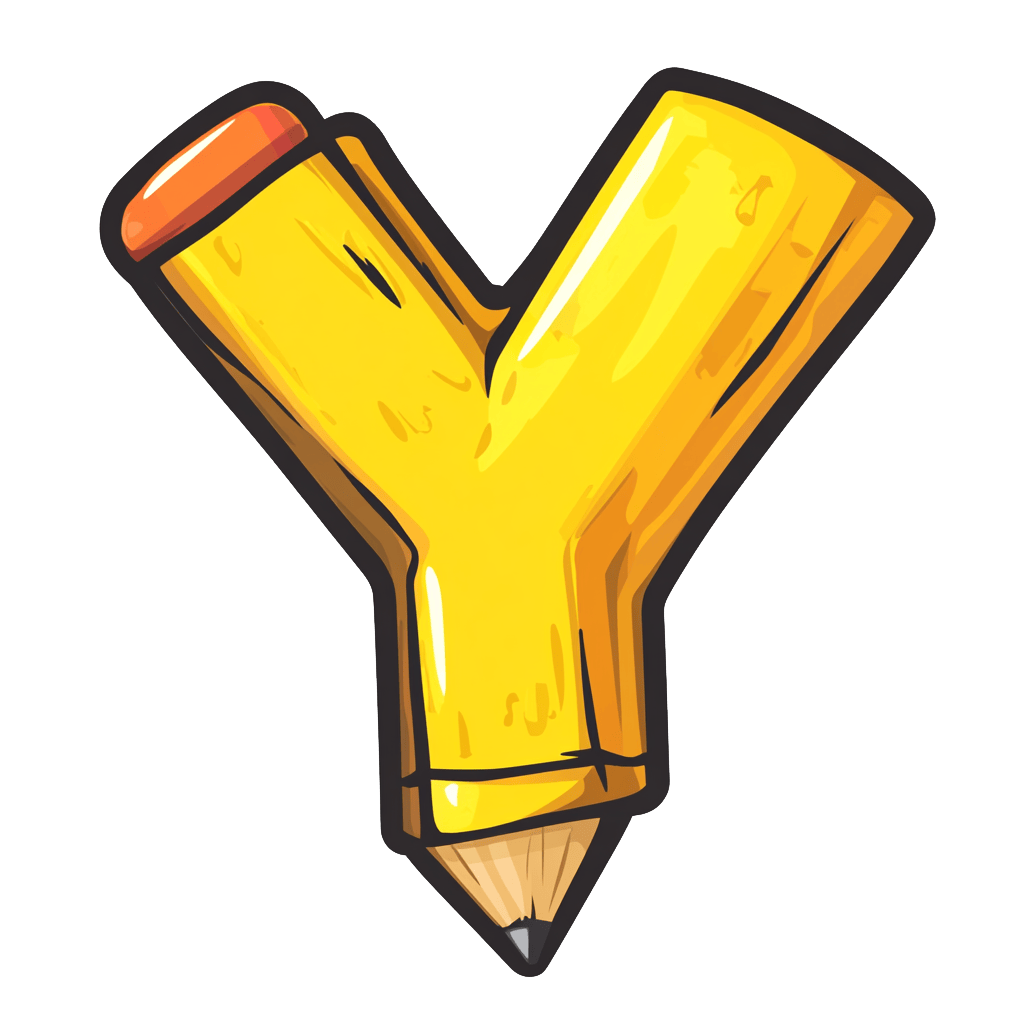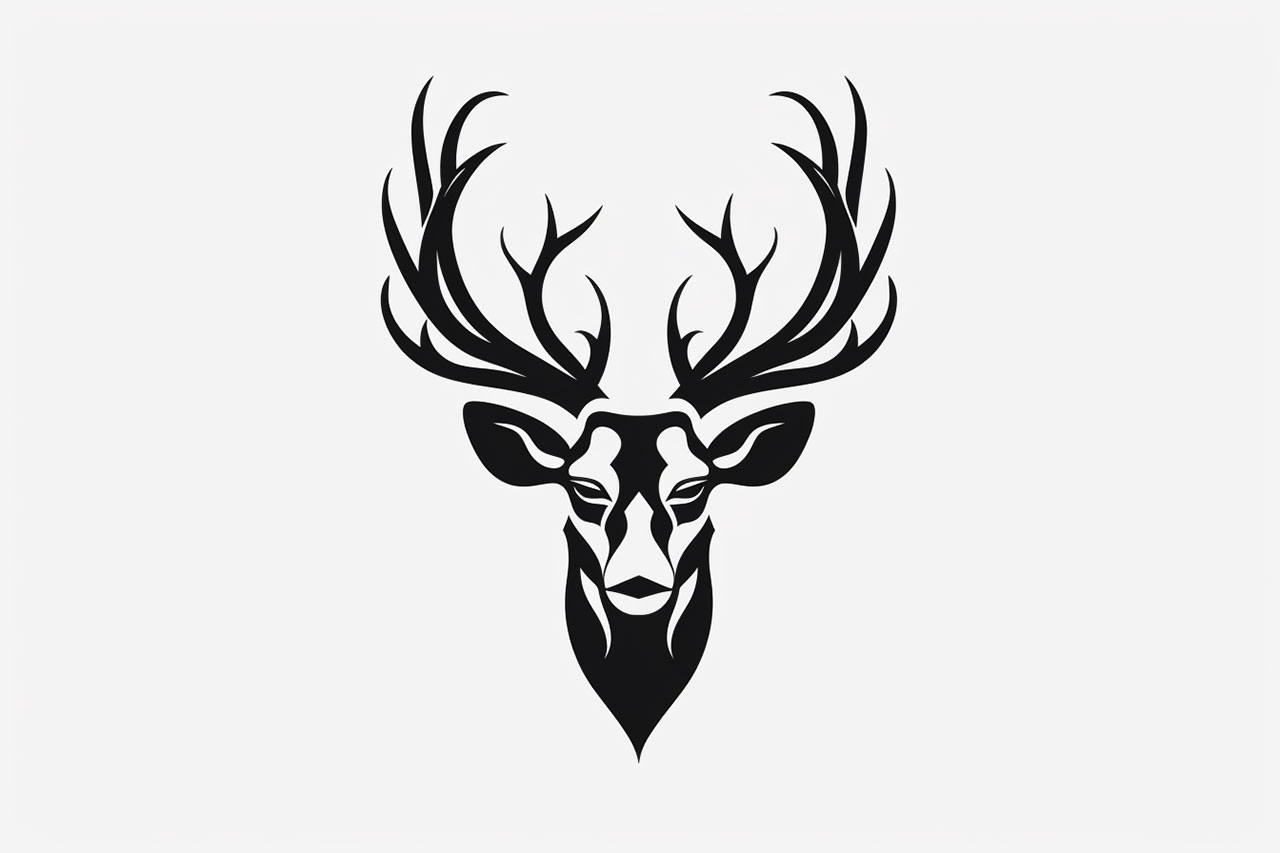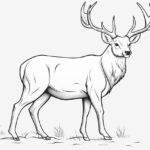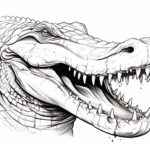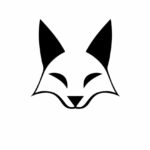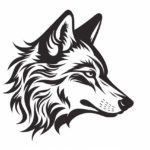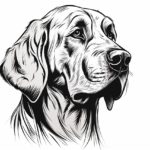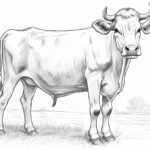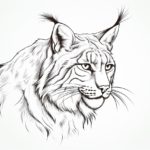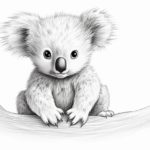
Welcome to the exciting realm of drawing! Whether you’re picking up a pencil for the first time or you’re an experienced artist looking to refine your skills, this tutorial is designed for you. Today, we’ll embark on a creative journey to draw the intricate and majestic head of a deer. This enchanting creature has long been a symbol of grace in nature, and capturing its essence on paper can be both rewarding and enjoyable.
In this step-by-step guide, I’ll walk you through each phase of the process, breaking it down into manageable steps that will help you create a detailed and realistic representation of a deer head. Drawing is all about observation, practice, and personalization, so feel free to add your unique touch as we progress together. Let’s prepare to breathe life into this beautiful animal as we translate its natural beauty onto the canvas of our sketchbooks!
To get started, make sure you have the necessary materials at hand. Setting up your workspace with the right tools will ensure a smoother and more enjoyable drawing experience. So, gather your sketchbook, pencils, and any reference images you may need, and let’s dive into this artistic adventure!
Materials Required
Before we begin, gather the following materials:
- Sketchbook or drawing paper
- Pencils (HB, 2B, 4B)
- Eraser
- Blending stump or tortillon
- Reference image of a deer head
Now that you have everything you need, let’s dive into the drawing process.
Step 1: Basic Shapes
Begin by sketching the basic shapes that will form the foundation of your deer head drawing. Start with an oval shape for the head and add a smaller circle on one side for the muzzle. Connect these shapes with curved lines to create the neck.
Step 2: Antlers
Deer are known for their impressive antlers, so let’s focus on drawing them next. Start by sketching two curved lines above the head for the main branches of the antlers. From these branches, add smaller lines that branch out further to create the final shape of the antlers.
Step 3: Eyes and Ears
Now, let’s bring the deer to life by adding the eyes and ears. Sketch almond-shaped eyes just below the muzzle, leaving a small space for the nose. Add details such as the iris and eyelashes. For the ears, draw two curved lines emerging from the top of the head and connect them with smaller curved lines to form the shape of the ears.
Step 4: Nose and Mouth
Next, focus on the details of the deer’s nose and mouth. Sketch a small oval shape for the nose at the tip of the muzzle. Add a curved line below the nose to represent the mouth. Within the nose, draw two small nostrils for added realism.
Step 5: Facial Features
To make your deer head drawing more realistic, pay attention to the details of the face. Add a small line above each eye to represent the eyebrow ridge. Sketch a few curved lines around the eyes to create wrinkles or furrows. You can also add a few lines below the mouth to indicate the chin and jawline.
Step 6: Fur Texture
Now it’s time to add texture to the deer’s fur. Start by lightly sketching short, curved lines throughout the head and neck. Follow the contours of the deer’s form and add more lines in areas where the fur appears thicker or more defined.
Step 7: Shading and Shadows
To give your drawing depth and dimension, it’s important to incorporate shading and create realistic shadows. Begin by identifying the light source in your reference image. Imagine the light hitting the deer from a particular direction and use that as a guide. Shade the darker areas of the deer’s head, such as the sides and beneath the antlers. Use your blending stump or tortillon to smooth out the shading and create a more seamless transition between light and dark areas.
Step 8: Refine and Finalize
Take a step back and assess your drawing. Look for any areas that need refinement or additional detail. Use your eraser to lighten or correct any mistakes. Pay attention to the proportions and make adjustments if necessary. Once you’re satisfied with your drawing, use a darker pencil (such as a 4B) to strengthen the lines and add any final touches.
Congratulations! You have successfully drawn a deer head. With practice, you will continue to improve your skills and capture the beauty of nature in your artwork.
Conclusion
Drawing a deer head can be a rewarding and enjoyable experience. By following these step-by-step instructions, using the right materials, and practicing regularly, you will be able to create stunning drawings of deer heads. Remember, patience and perseverance are key in developing your artistic abilities. So, grab your pencils and start bringing these majestic creatures to life on paper!
Fun Facts About Deer Heads
- Male deer grow and shed new antlers every year, with the size and complexity often increasing as they age.
- The antlers of deer heads are made of bone, and during growth, they are covered in a soft layer of highly vascularized skin called velvet.
- Each species of deer has a unique antler shape, which helps in distinguishing between different kinds of deer heads.
- In many cultures, deer heads and antlers are symbols of strength, virility, and the connection between the earth and sky.
- There are over 90 species of deer worldwide, which means a lot of variety in the shapes and sizes of deer heads.
- Deer use their heads in behaviors like sparring with each other during mating season, which can be both a display of strength and a way to dislodge loose velvet.
- The largest deer antlers ever recorded belonged to an extinct species known as the Irish Elk, with antlers spreading up to 12 feet.
- Deer heads often feature in artworks and decorations due to their regal and majestic appearance.
- Some people legally collect shed antlers from deer heads, known as antler hunting, which is a popular hobby in some regions.
- Deer heads have been prominently featured in many folklore tales and stories, often as mystical creatures or wise guides.
Suggestions for Scenes and Settings for Deer Head Drawings
- Forest Majesty: Depict a proud deer head with sprawling antlers amidst a dense, misty forest, emphasizing the elegance and mystery of the creature.
- Winter Woods: Create a scene of a deer head peeking through snow-covered branches, with frosty breath visible in the crisp air.
- Mountain View: Draw a commanding deer head silhouetted against a mountain backdrop at sunrise, celebrating nature’s grandeur.
- Fantasy Antlers: Design a mythical deer head with fantastically intricate antlers, perhaps adorned with jewels or flowering vines.
- Rutting Season: Illustrate two deer heads with locked antlers, capturing the energy and competition during the mating season.
- Reflection Pool: Depict a serene scene where a deer head gazes at its reflection in a tranquil forest pond, surrounded by water lilies.
- Autumn Glow: Create a setting where a deer head emerges from a richly colored autumnal forest, with leaves in vibrant hues swirling around.
- Night Watch: Show a deer head bathed in moonlight, with glowing eyes illuminating the night and hinting at a mystical woodland landscape.
- Dreamscape: Invent a surreal scene with multiple deer heads in varying sizes, overlapping and fading into a dreamlike mist.
- Tribal Patterns: Illustrate a deer head with culturally inspired geometric patterns adorning its face and antlers, representing a fusion of nature and art.
